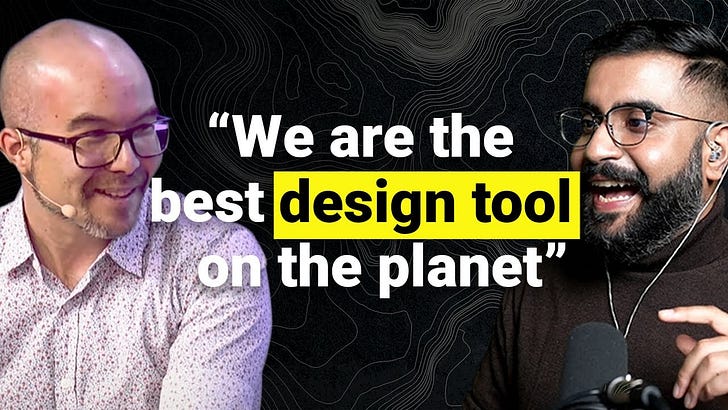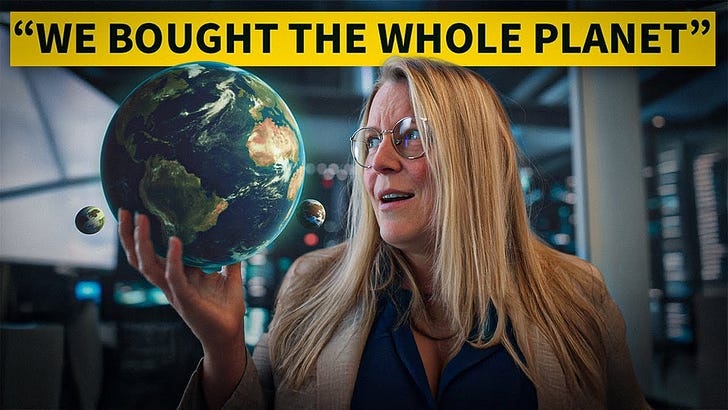How Canva Built a $32B Design Empire (and Why Adobe Should Be Worried)
Description
Canva quietly built a $32B empire — now it's redefining how the world creates with AI.
In this deep dive, I interview Canva Co-founder & CPO Cameron Adams about how the company went from a web-based underdog to the OS for visual content, used by over 240M people every month.
You can also watch it on YouTube, Spotify, or X/Twitter:
Some topics we explore:
1. Why Canva is used by over 240M people every month.
2. The 3-tier Canva AI strategy: deep tech, partnerships, and marketplace.
3. How they're bringing AI video and code generation to their platform.
3. How batch creation and real-time analytics enable mass personalization.
5. Why Canva believes the future of design isn’t about features, but outcomes.
Whether you're a founder, designer, or product nerd, this is a masterclass in scaling creativity at global scale. Hope you enjoy!
Transcript formatted for reading:
Bilawal Sidhu: What happens when you take professional design tools out of the hands of the 1% and give them to everyone? You get Canva, a company that's quietly amassed 240 million monthly active users, powering everything from TikToks to Fortune 500 pitch decks. Now, imagine having a graphic designer, video editor, and creative director at your fingertips, all powered by AI. So, how did Canva pull this off and where are they going next? Today, I'm sitting down with Cameron Adams, Canva's co-founder and chief product officer, to dive deep into how they're building the everything app for visual communication. What the future of human AI collaboration looks like and why AI might just create more creative jobs, not less. Let's get into it.
Cameron Adams: The vision for Canva has always been about reducing this job that could take months down to minutes, and AI is letting us take it from minutes to seconds. You had tools that 1% of the world could possibly use. So we set out to create this product that enabled the other 99% of the world to access design.
Bilawal Sidhu: More than 230 million people design with Canva every month. 373 designs created every single second. 240 million monthly active users. That is a flabbergasting number if you think about it. Now it's just table stakes for making a pitch deck, like, that's the tool you use.
Cameron Adams: So that quickly takes one design that you're creating and multiplies it by 500 and then lets you do that in the space of minutes.
Bilawal Sidhu: Do you expect it to change how people build interactive experiences?
Cameron Adams: It is literally months to create some of these things that you can now generate through Canva code in minutes. Companies like Adobe very much approach it from the opposite direction. So when they try and bring something like a Canva to to life, they just don't have the same DNA.
Bilawal Sidhu: Cameron, thank you so much for coming on the show.
Cameron Adams: Such a pleasure to be here, Bilawal.
Bilawal Sidhu: Congratulations, hot off the presses. Canva is number five on the CNBC Disruptor 50 list. Sounds like an incredible validation of the journey you've been on.
Cameron Adams: That is a pretty good reflection of of where we've been and also where we're going. Still disrupting.
Bilawal Sidhu: Well, speaking of the journey, let's go back to the genesis story. How did Canva go from being a niche design tool to one of the largest SaaS companies in the world, almost reframing the entire market for design and creation tools?
Cameron Adams: Started out in 2012. Design for everyone was a category that did not exist. And we all realized the immense power of design to enable people to achieve their goals, but the fact that it was highly inaccessible to most of the world. You had tools that 1% of the world could possibly use, that they could afford and that they could understand and that they could actually get anything good out of. So we set out to create this product that enabled the other 99% of the world to access design. We started small. Uh we mostly focused on social media in the very early days, but in the intervening decade, we've expanded to presentations, you can create T-shirts, videos, websites, pretty much any visual content can be made on Canva. And it has truly inspired people. We've got now 240 million people that use the product every month, and they use it for an incredible variety of things. But it's really fascinating to dive into each and every design story of every person that uses Canva, because they're using Canva for impacting their own lives, whether that's putting a poster up in the window of their store or creating a pitch deck for their first business, or helping their nonprofit get more donations. Every design that's created on Canva has this amazing story behind it.
Bilawal Sidhu: I love that. Yeah, and 240 million monthly active users. That is a flabbergasting number if you think about it, and it goes to show that everyone can be creative if they have the right set of tools. But I have to go back to the start and ask you, you know, one of the unique things about Canva was it's completely web-based. And I still remember back then, you know, of course there's like the Adobe incumbent tools like Photoshop, what not. Sketch was super popular, like native apps were super hot back then. Y'all went web first. Did it feel risky back then betting on emerging web standards to build a freaking design editor in the browser?
Cameron Adams: I I love that you captured the exact zeitgeist of tech at the time. It didn't feel risky to us. It felt like a really interesting thing to explore because one of the things about the existing tools was the kind of barriers to access. Uh and downloading a big piece of software and learning how to use it over six months was just not something that people were going to tackle in order to get a very small job done. So giving them easy access to the tool through their web browser and letting them get up to speed in seconds, not months, um was a really critical part of helping Canva grow in the early days. We think that's the only way that you can truly grow a product and scale it. When you're talking about 240 million people, you need to have all these inroads through which they can reach the product, and the only way that we could think of doing that was through a web based product.
Bilawal Sidhu: Yeah, it's funny. It's like my dad uses Canva for his Substack and like Twitter account now and it's it's kind of wild. It's like the time to first creation is just so low, like it does feel so accessible that you can create something versus, yeah, like you're saying grappling with convoluted tutorials and following stuff along just to get to something that feels like the equivalent of a hello world example.
Cameron Adams: I love that your dad has a substack.
Bilawal Sidhu: It's it's wild, yeah. Let's uh for a while he had more followers than me on Twitter, you know, it's just like he's got spicy hot takes on there. Um, so I am curious about the web stuff. Like did some of your work at Google give you any conviction that web was the way to go?
Cameron Adams: Uh, not specifically my work at Google. So I've been working in the web for probably a decade and a half before I got to Canva. My work at Google kind of touched upon that, and I did a lot of work there prototyping what could actually be done in a web browser. I'd written a few books on JavaScript before that. I've been in the web standards scene. I think as you mentioned, like deeply in the tech, thinking about the types of technology that we needed in a browser to actually create apps and create really interactive websites. I've been pushing the boundaries of that for a while, and Canva was just kind of the next step uh beyond that. It was very much a nexus point of for for me of my experience, what was possible, the idea of Canva itself, and it all just coming together into this neat little package where we could be on the cutting edge of what browsers could do, like we were still testing out how many images you could have in a design, how to manipulate text, like how to have all these moving parts that could be rendered on what was essentially a web page at the time. You know, web apps was still something that was forming. Just on the cutting edge and at the right time to bring that into the browser and make it accessible to people. together with our product philosophies of democratizing design, it was just the perfect storm of technology innovation, bringing product to market and having the right customer base that needed this product just at the right time.
Bilawal Sidhu: Now speaking of democratizing design, I'm curious how have Canva users changed over the years, right? Like when it started out, it was bloggers, marketers, small businesses, um you know, that wouldn't have traditionally, you know, had access to let's say like a like a staff designer or something. But eventually professionals and large enterprises came to the party and along with it immense growth. Uh talk me through the evolution of Canvas's user base.
Cameron Adams: Canvas's user base now is just so broad. It basically enco







